The hydration of an alkene by an acid is one of those fundamental reactions, taught early on in most chemistry courses. What can quantum mechanics teach us about the mechanism of the reaction?
The diagram below shows us the IRC, or intrinsic reaction coordinate for the process (for definitions, see here), the reaction proceeding from left to right as shown in the scheme above, with a (free energy) barrier of 14.4 kcal/mol and exothermic by a similar amount (wB97XD/6-311G(d,p) with a continuum solvation correction for water).
One first notices that it is not the smooth bell-shaped profile that is normally drawn in text books. It has bumps/detail. What do these mean? Before dissecting, lets look at another plot, this time the RMS (root mean square) gradients of the 3N-6 geometric variables along the reaction coordinates. These reveal two regions where the RMS gradient is almost zero (other than reactant and product).
| 1 | 2 | 3 |
|---|---|---|
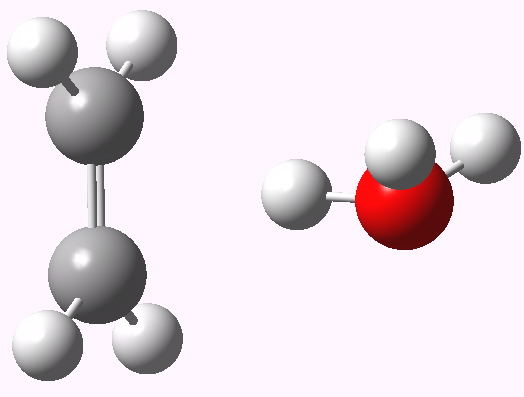 Hydrogen-bonded reactant |
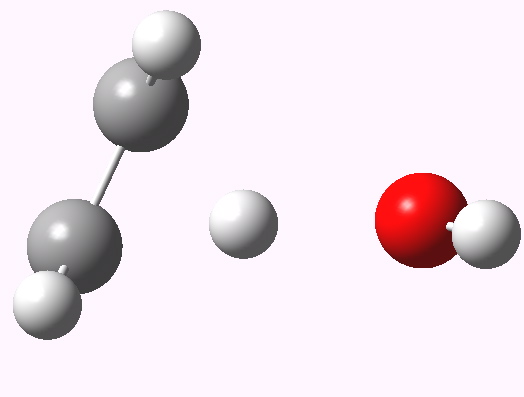 Forming bridged protonated ethene |
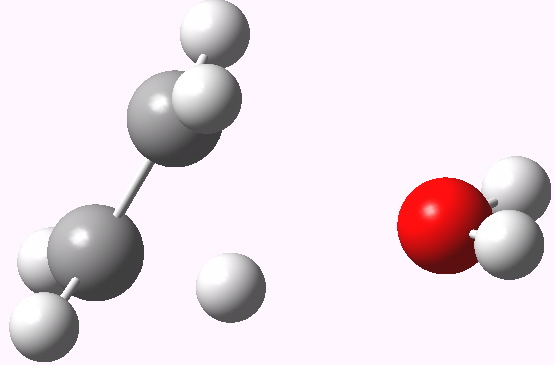 The transition state Click for 3D. |
| 4 | 5 |
|---|---|
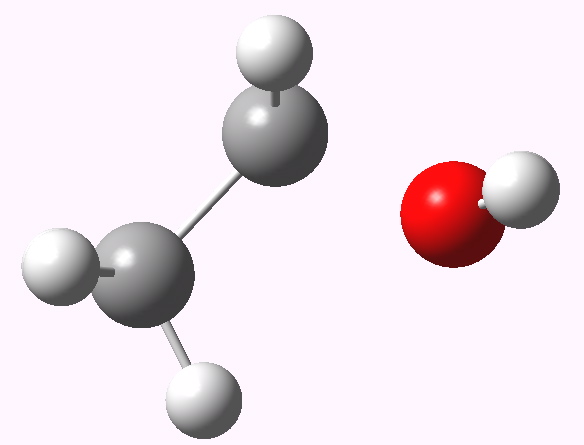 Second phase, C-O bond formation |
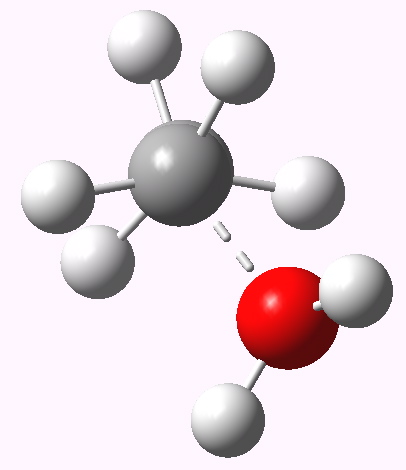 Rotating from eclipsed to staggered |
Five distinct stages can be seen.
- The hydronium ion approaches the ethene, and forms quite a strong π-facial hydrogen bond.
- Water now starts separating from the hydrogen bonded complex, thus relocating the H-bond from the alkene to the water.
- The formal transition state (the only one) is reached, with the proton moving from the symmetric bridged ethyl cation to one end, and the water is starting to move to the other end. Not perhaps the most obvious of transition states!
- The formation of the C-O bond is now completing, and the C-C bond is now almost purely converted from double to single.
- Only at this stage does the eclipsed conformation of the newly formed ethanol start to rotate into a staggered and final conformation.
- Overall, the reaction is concerted (if not synchronous), and its reverse would be classified as an E2 elimination.
You can see quite a lot of simple basic principles in chemistry are illustrated along this reaction coordinate. We have space for one more: what happens if you make the alkene very much more reactive? How about cyclobutadiene, which in avoiding anti-aromaticity, has become highly reactive.
The IRC for this variation is shown below. Notice now the much smaller barrier to reaction (~0.4 kcal/mol in ΔG), and the much greater exothermicity overall.
The transition state is also different. It corresponds to proton transfer from the hydronium cation to one carbon of the cyclobutadiene, to form a stabilised allyl cation. In terms of the reverse elimination, this now corresponds to an E1 type, involving an intermediate species, and the reaction is no longer concerted.
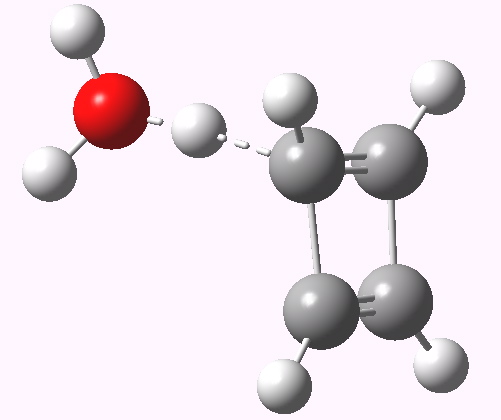
The transition state for protonation of cyclobutadiene
Tags: alkene, free energy, hydration, intrinsic reaction coordinate, IRC, Tutorial material


In my organic chemistry lecture the hydration of ethene is discussed slightly different, namely H3O+ protonates the double bond from one face, but a second molecule of water attacks from the other face.
That would correspond to an anti-addition of H+ and H2O, whereas in your calculation, it is a syn-addition.
Reversing the reaction, in your case it is a syn-E2 elimination, in the above case an anti-E2-elimination. Intuitively, I would prefer the anti-pahtway, though the syn-pahtway may be preferred especially with strained alkenes (similar to HX addition to norbornene).
For some very strained double bonds (in fact a silene… C=Si double bond), addition of water happens without acid-catalysis in what has been propsed a cyclic (6-ring) mechanism involving two molecules of water joined by hydrogen bridges, see: http://pubs.acs.org/doi/abs/10.1021/ja0613557
Maybe cyclobutadiene can also hydrate according to this mechanism?
Remember that the more waters that are involved, the greater the entropic requirement, and its a balance between syn/anti and entropy. An example of the anti pathway was described for the related SN1 reaction.
In this example, I was discussing a particularly reactive alkene (cyclobutadiene) which may be different from un-activated alkenes. Ultimately, one probably would have to study the molecular dynamics to get a properly statistical picture.
[…] represents protonation of an alkene by an acid. Two products are of course possible, leading to either a tertiary carbocation as shown in (a), or […]